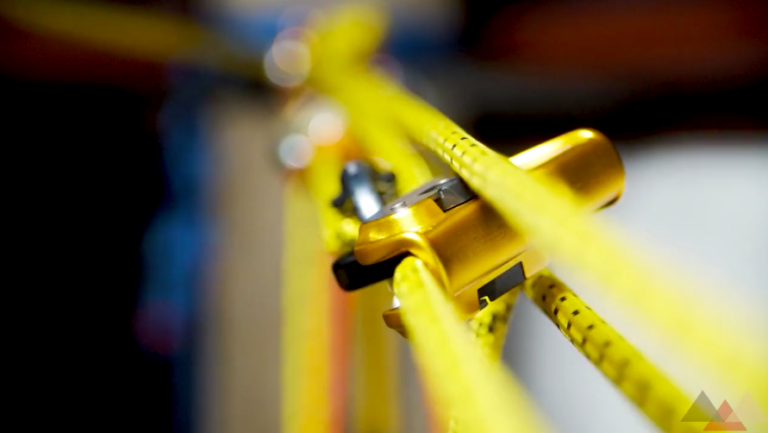A Rescue Rope and Cord Overview
The history of rope dates back thousands of years, evolving from primitive hand-twisted fibers to the sophisticated ropes we use in rescue operations today. For technical rescue and search and rescue (SAR) teams, understanding rope construction, material properties, and applications is essential for effective and safe operations. Let’s explore key rope types, their characteristics, and their roles in rescue systems.
Evolution of Rescue Rope: From Natural to Synthetic
Early ropes were made from natural fibers like hemp and manila, which were suitable for hauling but limited in strength, durability, and performance under load. The introduction of nylon rope in the mid-20th century revolutionized rope design, allowing for:
- Lighter weight without compromising strength.
- Greater impact absorption.
- Load capacities exceeding 5,000 pounds.
These innovations made climbing and rescue operations safer and more accessible, setting the stage for modern rope systems.
Static vs. Dynamic Rope
When it comes to rescue operations, rope selection is critical. Understanding the difference between static and dynamic rope helps teams choose the right tool for the job:
Static Rope
Static ropes are the gold standard for technical rescue, including litter rescues, highline setups, and ascents/descents. These ropes are:
- Low-Stretch: Ideal for supporting heavy loads and minimizing bounce.
- Highly Durable: Designed to handle friction over edges and under tension.
- Stable Under Load: Best for controlled operations like rappelling and hauling systems.
Common Applications: Technical rope rescue, highlines, confined space operations.
Dynamic Rope
Dynamic ropes are designed to absorb energy and stretch under load, making them ideal for applications involving falls, such as rock climbing. Key features include:
- Shock Absorption: Protects climbers by reducing the impact of falls.
- Elastic Stretch: Absorbs sudden forces to prevent system overload.
While dynamic rope excels in climbing scenarios, it is less effective in rescue operations that require minimal elongation.
Common Applications: Lead climbing, top-rope climbing, and situations with fall potential.
Rope Construction: The Kernmantle Advantage
Modern rescue ropes use a kernmantle construction, which combines an inner core (kern) for strength and an outer sheath (mantle) for protection. This design offers:
- Superior Strength: The kern provides up to 80% of the rope’s load capacity.
- Abrasion Resistance: The sheath protects the core from wear and tear.
- Durability Under Extreme Conditions: Ideal for fire rescue, edge protection, and severe weather.
Rope Materials: Fiber Comparisons
Rescue ropes are made from a variety of fibers, each with unique properties tailored for specific applications. Below is an overview of commonly used materials:
Nylon
- Strength: High tensile strength and excellent abrasion resistance.
- Shock Absorption: Effective for dynamic loads and fall protection.
- Limitations: Absorbs water, which reduces strength; sensitive to acidic exposure.
Best For: General rescue operations requiring durability and shock absorption.
Polyester
- Low-Stretch: Offers minimal elongation for static systems.
- Water Resistance: Maintains strength in wet conditions.
- UV Resistance: High durability in prolonged sunlight exposure.
Best For: Static rope systems in wet or outdoor environments.
Polypropylene and Polyethylene
- Floatation: Lightweight and buoyant, ideal for water rescue.
- Limitations: Lower strength and reduced durability compared to nylon or polyester.
Best For: Water rescue throw lines.
Aramid Fibers (Kevlar®, Technora®, Twaron®)
- Heat Resistance: Withstands temperatures up to 500°C, making it ideal for fire escape lines.
- Strength: Exceptionally strong but prone to failure under repeated bending.
Best For: Fire-resistant escape ropes and emergency evacuations.
High Modulus Polyethylene (HMPE) – Spectra® and Dyneema®
- Strength-to-Weight Ratio: Extremely strong yet lightweight.
- Limitations: Poor thermal resistance; not suitable for rappelling or friction-heavy systems.
Best For: Lightweight river rescue lines requiring strength and floatation.
LCAP Fibers (Vectran®)
- Strength and Stiffness: High tensile strength with minimal elongation.
- Heat and UV Resistance: Performs well in high-heat environments and prolonged sunlight.
Best For: High-performance rescue applications requiring stiffness and strength.
Matching Rope to the Mission
Choosing the right rope for your operation is mission-critical. Consider these factors:
- Environment: Water rescue vs. fire rescue requires different materials.
- Load Requirements: Assess expected static or dynamic loads.
- Durability Needs: Factor in abrasion, UV exposure, and heat resistance.
- Specific Systems: Static ropes for hauling; dynamic ropes for fall protection.
Conclusion
Rescue ropes and cords form the backbone of technical rope systems used by search and rescue professionals. By understanding rope construction, material properties, and specific applications, teams can select the most appropriate tools for their missions, ensuring safety, reliability, and efficiency in critical situations.
For a deeper dive into rope rescue systems and training, explore more at Rigging Lab Academy.
Peace on Your Days
Lance










